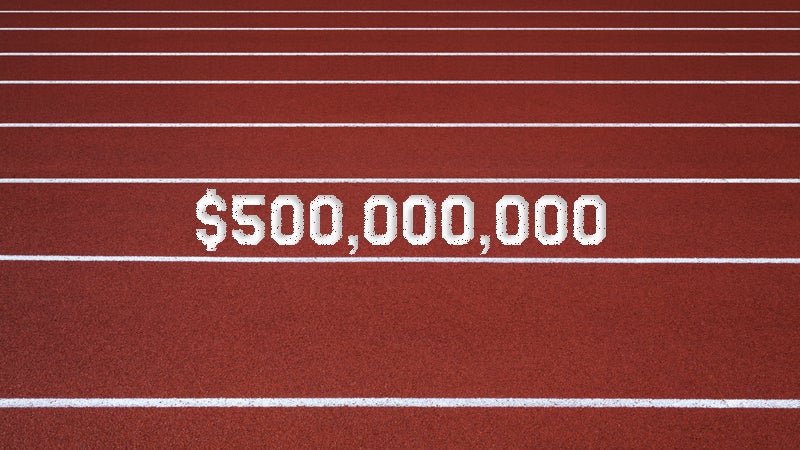To win election to the U.S. House of Representatives costs, on average, $1,600,000. Entry into the Senate? $10,470,000. And to buy your way to the top of running? Around $500 million.
This Wednesday, deal from 2017 to 2040 with USA Track & Field, reportedly valued at $500 million. The agreement has more than a few people asking: Does Nike now own running?
While some praise the deal as a major boost for future track-and-field funding, others say that the agreement gives Nike too much power over the branding and marketing at running competitions. American team athletes are required to wear Nike-branded apparel at international competitions, which means they can’t advertise their own sponsors at some of the sport’s marquee events.
Lauren Fleshman, runner and two-time national champion in the 5,000 meters, summed up the frustration of many athletes, tweeting: “If you’re going to sell the marketing rights to the athletes’ bodies, it would be nice to include us in the conversation.”
That reaction is echoed by some in the apparel industry. Sally Bergesen, CEO of Oiselle, said she’d like USATF to seek funding from a variety of running brands, and look at the possibility of federal funding as well. Earlier this year, Oiselle signed on Kara Goucher, who was previously with Nike, after having snagged Lauren Fleshman the year before.
“They should be structured in a way that one company doesn’t call the shots,” Bergesen said of USATF.
Despite the skepticism surrounding the deal, the substantial injection of money into the sport is a big win for athletes and the track-and-field community, says USATF spokesperson Jill Geer.
“This contract is truly a game-changer,” Geer said. “We now have the financial resources to expand our programs.”
Nike has sponsored USATF since 1991, but the recent deal is the largest and most far-reaching of the ongoing partnership. Geer said USATF approached Nike again after the Winter Olympic Games to begin discussions about a possible extension of the existing sponsorship. Other brands expressed interest in sponsorships, Geer said, but couldn’t match Nike’s offer.
The enormity of the Nike deal will allow USATF to expand its funding of athletes, Geer said. She cited examples such as uniforms for master’s athletes, more prize money at competitions, sports performance workshops, and covering travel costs for coaches at the Olympic Games.
“Our new contract with Nike will enable USATF to elevate athlete support programs in a way we never have before,” Geer said.
The reaction from athletes themselves, however, has been decidedly mixed.
Runner Nick Symmonds, who has also been vocal about his frustrations with athlete branding restrictions, expressed hesitation about the deal. Symmonds said that the long-term agreement will provide USATF with financial security, but it might not be the best scenario for athletes searching for sponsors.
“We want to see sponsors fighting for the ad space we have on our chests,” Symmonds said. “If Nike has it locked up for 23 years, no one else is really getting the chance to compete.”
Track & Field Athletes Association treasurer Ann Gaffigan also voiced mixed feelings about the arrangement. She sees the significant financial investment as positive sign for the future of track and field, but recognizes that some runners are wary of the deal.
“It worries a lot of athletes who aren’t represented by Nike because they’re concerned they won’t get the same opportunity,” Gaffigan said.


